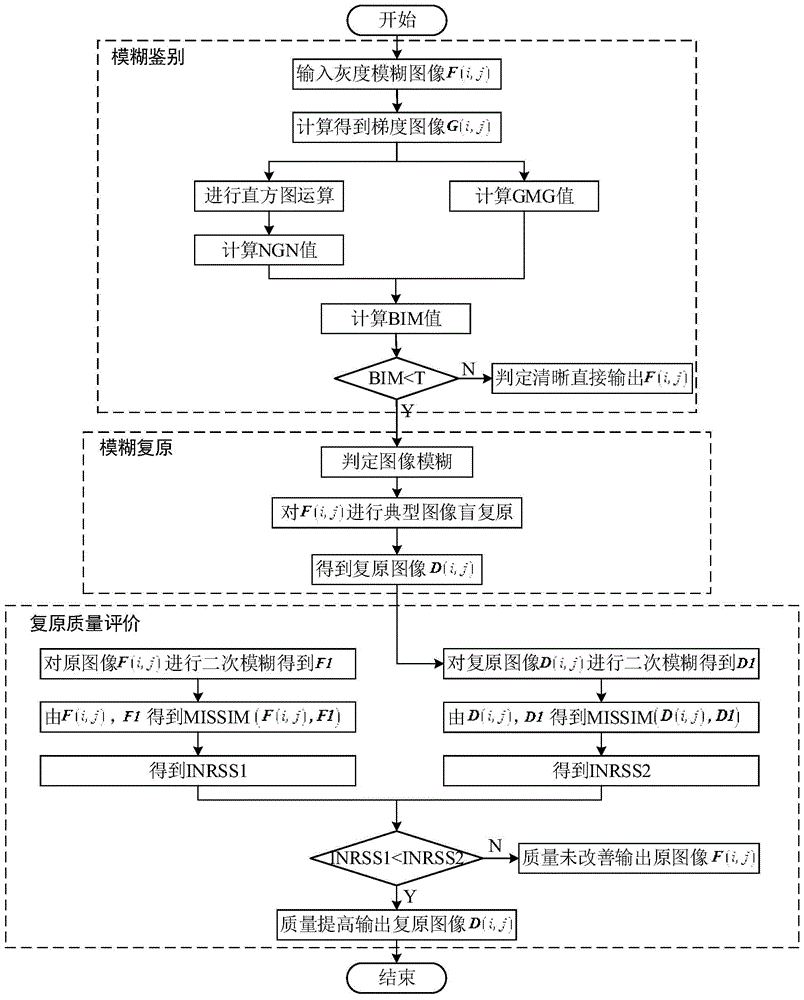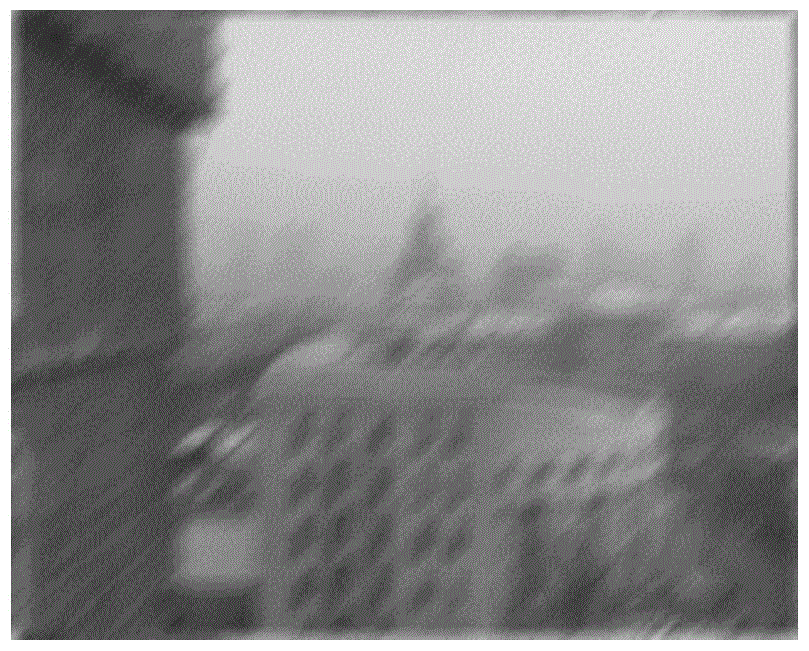A Fast Digital Imaging Blur Identification and Restoration Image Quality Assessment Method
A technology for image quality assessment and digital imaging, which is applied in image enhancement, image analysis, image data processing, etc., can solve the problems of inability to effectively identify blurred images and clear images, ineffective evaluation of image restoration results, and unstable output results. Achieve the effects of strong implementability, guaranteed reliability, and enhanced accuracy
- Summary
- Abstract
- Description
- Claims
- Application Information
AI Technical Summary
Problems solved by technology
Method used
Image
Examples
specific Embodiment approach 1
[0042] Specific Embodiment 1: A method for rapid digital imaging blur identification and restoration image quality evaluation method of this embodiment is specifically prepared according to the following steps:
[0043] Step 1: Input the grayscale blurred image F(i,j), obtain the size M×N of the grayscale blurred image F(i,j), and calculate the horizontal gradient image G of the grayscale blurred image F(i,j) x (i, j) and the vertical gradient image G y (i,j), thereby obtaining the gradient image G(i,j); wherein, M is the width of the grayscale blurred image F(i,j), and N is the height of the grayscale blurred image F(i,j);
[0044] Step 2: Calculating the average gray gradient value GMG (Gray MeanGradients) of the grayscale blurred image F(i, j), which reflects the gradient magnitude characteristic of the blurred discrimination index of the image;
[0045] Step 3: Perform histogram statistics on the gradient image, that is, calculate the histogram h of the gradient image G(i...
specific Embodiment approach 2
[0056] Specific embodiment 2: The difference between this embodiment and specific embodiment 1 is that the gradient image G(i, j) is obtained in step 1, and the calculation formula is as follows:
[0057] Among them, i, j are the abscissa and ordinate values corresponding to the image pixel, respectively. Other steps and parameters are the same as those in Embodiment 1.
specific Embodiment approach 3
[0058] Specific embodiment three: the difference between this embodiment and specific embodiment one or two is: the average gray gradient value GMG formula of calculating image F (i, j) in step two is as follows:
[0059]
[0060] . Other steps and parameters are the same as those in Embodiment 1 or Embodiment 2.
PUM
 Login to View More
Login to View More Abstract
Description
Claims
Application Information
 Login to View More
Login to View More - R&D
- Intellectual Property
- Life Sciences
- Materials
- Tech Scout
- Unparalleled Data Quality
- Higher Quality Content
- 60% Fewer Hallucinations
Browse by: Latest US Patents, China's latest patents, Technical Efficacy Thesaurus, Application Domain, Technology Topic, Popular Technical Reports.
© 2025 PatSnap. All rights reserved.Legal|Privacy policy|Modern Slavery Act Transparency Statement|Sitemap|About US| Contact US: help@patsnap.com



